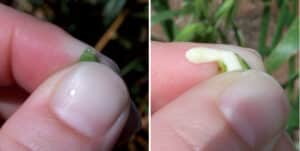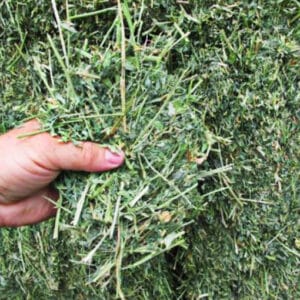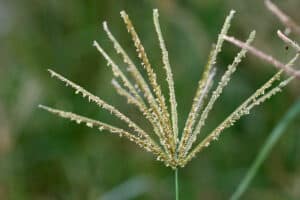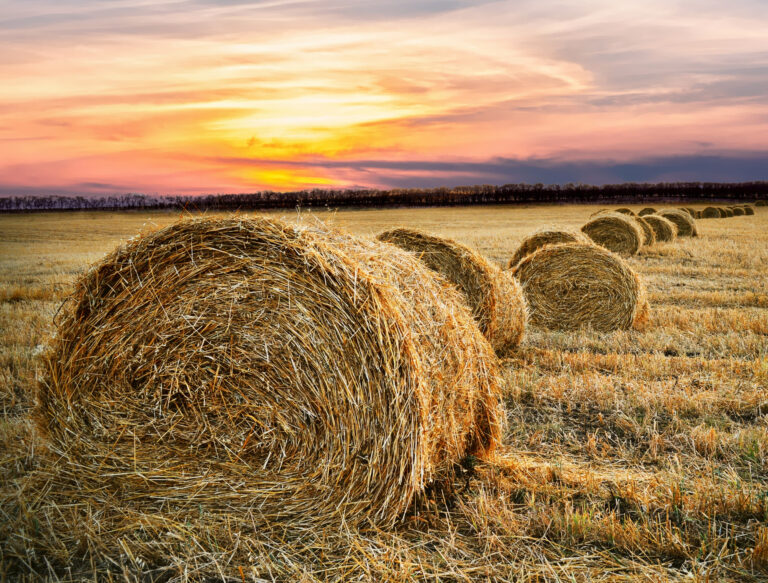How well do you know your hay? Sowing, cutting, testing, choosing: there’s a lot to think about. Equine nutritionist LEISA HOFSTETTER explains.
In addition to providing extra roughage for horses, in times of scarce fresh fodder certain hays can provide extra nutrition. Although the digestibility of protein in grains is better than that in forages, the quality of protein in forages is superior to that in grains. Quality protein contains a good variety of amino acids and most, if not all, essential amino acids (which a horse can’t synthesise and must therefore consume).
Hay may be lower in vitamins E, A and the B group than fresh forage, so it’s important to adjust your horse’s diet accordingly. Your equine nutritionist can suggest any supplements or changes that may be needed. Testing your specific hay is also an option.
Testing hay
Gathering a sample of hay for testing involves inserting a hay corer into the side of selected bales. Alternatively, expose the inside of the bale and select handfuls of hay representative of the rest. For both methods, a 200 to 500 gram sample is needed, and is best stored in a ziplock bag before couriering to a testing facility. Depending on the facility, hay can be tested for content such as protein and amino acids, carbohydrate, fat and volatile fatty acid, vitamins and minerals. Your equine nutritionist will be able to advise you regarding a testing facility.
Making hay
There are many reasons why making hay is beneficial. Storage of nutrients in the form of hay can allow horse owners to provide a good level of nutrition year-round, improve the energy yields of pastures, and generate an income.
But making hay can be a tricky business; a lot depends on the weather and timing. Grasses and legumes (forages) commonly used to make hay for horses can be categorised into warm season and cool season. Warm season forages, such as lucerne, Rhodes and teff, will grow slowly in temperatures less than 15°C. Often these types grow best in areas where there is less chance of frost or freezing temperatures.
Cool season forages, including fodder or cereal oats, will grow at a reasonable rate even below 15°C, but are slowed somewhat in temperatures below 7°C. Perennial cool season grasses appear to thrive over the cooler months and may become dormant during warmer weather. Along with other forages, these are higher in fructans (types of sugars that act like antifreeze for the plant) than warm season grasses. It’s partly due to these fructans that cool season forages are higher in starch and other non-structural carbohydrates (NSCs) than warm season forages, making them less suitable for horses prone to obesity and/or laminitis.
Sowing the crop
The methods used for seeding a hay crop vary depending on the type of forage. For example, lucerne is sown at an optimum depth of 0.5-1cm, teff at 0.3-0.6cms, Rhodes grass at less than 2cms, and oaten hay at 3-6cms. Rolling the seeds in after sowing can increase germination rate and reduce losses to wind and pests. Using a herbicide against weeds prior to sowing lucerne can increase the yield, as lucerne competes poorly with weeds. To reduce weed competition the same can be done with grasses, but an alternative is to make the first cut once the grass reaches about 30cm, then harvest with a subsequent cut. Omitting the herbicide might reduce the yield slightly, but may be more cost effective. Additionally, not using herbicide may decrease the potential for a detrimental effect on the local ecosystem, which in turn will improve the longevity of your property for growing purposes.
Cutting the crop

Left: Cut oats at the watery, ripe stage. Right: More mature plants produce a milky white juice (© State of Western Australia, Department of Primary Industries and Regional Development, WA )
As with seeding, the best time to cut your forage for hay varies by type. This process can be the most sensitive to weather and timing. When harvesting lucerne hay, the optimum time to cut is at early bloom, when 10-15% of the lucerne plants are flowering. Cutting at the mid-bloom or even full bloom stage will increase the yield, but the quality of nutrients is sacrificed. Alternatively, cutting at the pre-bud or late bud stage of growth will increase nutrient quality, but will sacrifice yield. For example, lucerne will typically contain 22-26% crude protein at the pre-bud stage, 18-22% in early bloom, 14-18% in mid bloom, and just 9-13% in full bloom. This same decline in nutrient quality occurs with grasses as they mature.
Lucerne has been shown to produce the best yields for hay when harvest cuts are done at six week minimum intervals. To ensure there is no damage to the crown and to allow for good regrowth for subsequent cuts, it’s important to cut the lucerne at no less than 7cm in height.

Protein rich lucerne is a warm season forage.
When harvesting grasses for hay, there is some variability in optimum cutting times and heights. The best time to cut oats is at the watery, ripe stage. This is when the top floret on the main stem produces a green juice when squeezed (in contrast to the milky white juice produced by a more mature plant). There is a five to seven day window for this stage of growth for oats. The optimum cutting height to achieve maximum yields in subsequent cuts is around 15cm. For teff, the best time to cut is when the crop has reached a height of 0.7-1m, and cutting to 10cms allows for the best yield in subsequent cuts.
Which hay to feed?

Teff may benefit horses prone to stomach ulcers.
Choosing the right type of hay for your horse involves assessing their needs. Each hay has its own benefits and drawbacks. Horses prone to laminitis or obesity may benefit from legume hays such as lucerne, as these are lower in starch than most grass hays. There is also variability of starch content in grass hays. Oaten hay is high in starch, whereas teff hay is renowned for being low in starch and other NSCs (less than 10-12%) making it a possible choice for laminitic horses.
For horses prone to stomach ulcers, lucerne, teff or other hays high in calcium and/or protein may be of more benefit than other forage hays. Lucerne in particular has been shown to have a better buffering effect on stomach acid in the digestive tract than other grasses.
The nutrient profile of various hays can differ substantially. For example, lucerne hay is a better source of vitamin A than grass hays, but contains less vitamin E. It is important to seek professional advice to help you decide which hay would be best. Of course, your horse might make the decision for you, as some hays are more palatable than others. Lucerne is generally more readily eaten than teff and other grass hays, and most horses prefer lucerne hay over fresh grass.

Rhodes grass is lower in oxalates than most other warm season grasses.
Warm season grasses, although lower in NSCs, are likely high in oxalates, a form of calcium which actually prevents calcium absorption to the point where the mineral is leeched from skeletal calcium stores, causing swelling and the characteristic ‘big head’. Rhodes grass is comparatively lower in oxalates than most other warm season grasses, including teff.
Enlisting the help of an expert will help you find the best hay for your horse. In doing so, you can avoid some health problems and even improve current ones. No hay is completely perfect, but an equine nutritionist can help you balance the nutritional benefits and drawbacks so that your horse is the happiest and healthiest they can be.
Leisa Hofstetter, BEqSc, is an Equine Nutritionist and founder of Hof Equine. Call her on 0415 120 454, or visit her on Facebook .



